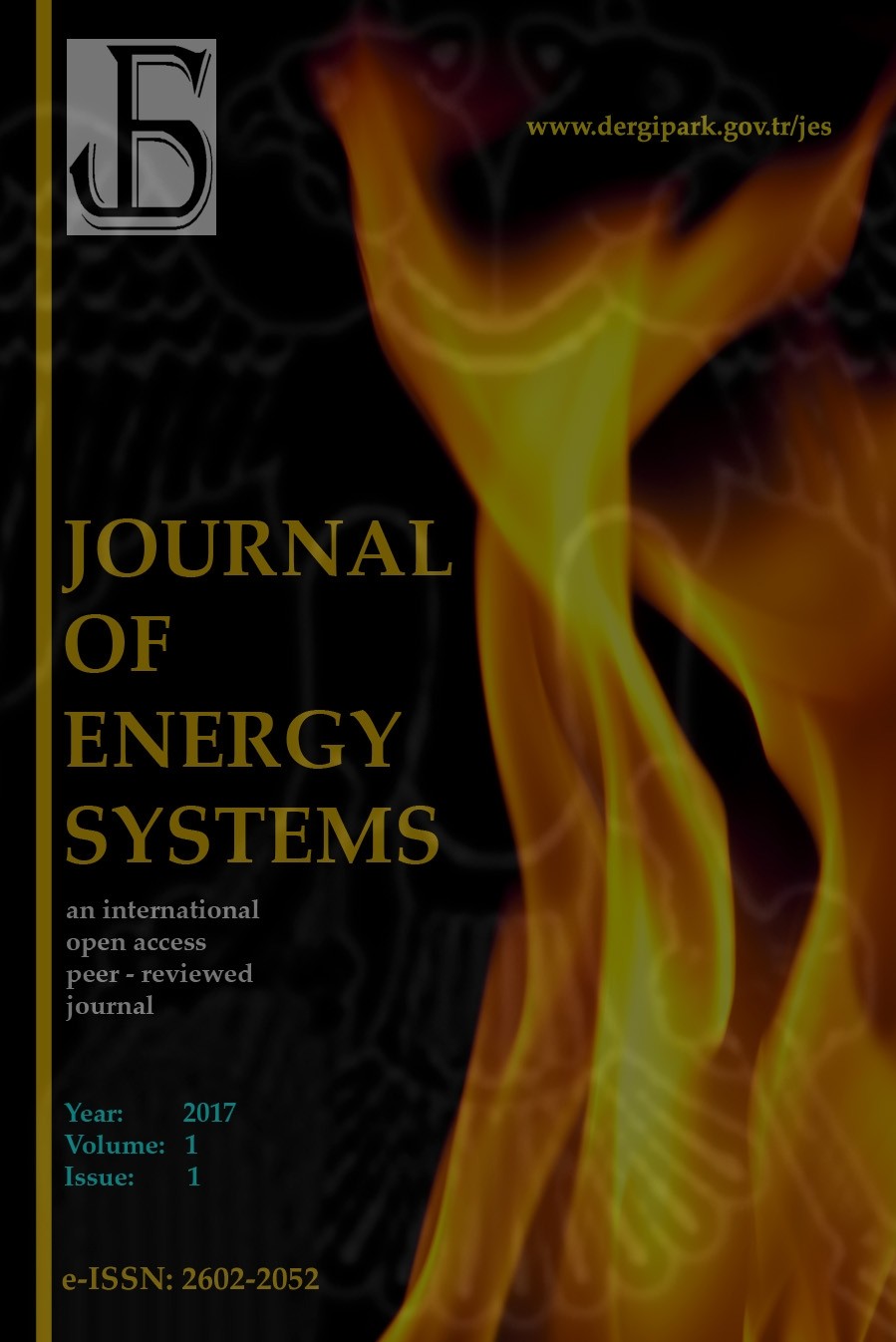CFD Modeling and Multi-Objective Optimization of the Axial Fan Parameters
CFD Modeling and Multi-Objective Optimization of the Axial Fan Parameters
Axial fan, HVAC Optimization,
___
- Amano R.S, Lee.E.K, Xu c, Xie J. Investigation of Unsteady Flow Generated by an Axial Fan: Experimental Testing and Simulations. International Journal of Rotating Machinery. 2003; 3, 256-263.
- Bleier FP. Fan Handbook Selection Application and Design, McGraw Hill Publications, 1997.
- Bredell J.R, Kroger D.G, Thiart G.D. Numerical investigation of Fan Performance in a Forced Draft Air-Cooled Steam Condenser. J Applied Thermal Engineering. 2005; 26, 846-852.
- Bureau of Indian Standards, Centrifugal Fans, Standard No. IS-4894-1987, 1988.
- Bureau of Indian Standards, Propeller Type Ac Ventilation Fans, Standard No. IS-2312-1967, 1967.
- Bureau of Indian Standards, Electric Pedestal Type Fans and Regulations, Standard No. IS-1169-1967, 1968.
- Bureau of Indian Standards, Electric Ceiling Type Fans and Regulations, Standard No. IS-174-1979, 1980.
- Culham, R. G. Fans Reference Guide, 4th Edition, Ontario Power Generation, Canada, 2001.
- Downie R. J, Thompson M. C, R, Wallis R. A. An Engineering Approach to Blade Design for Low to Medium Pressure Rise - Only Axial Flow Fans, J. Experimental Thermal and Fluid Science, 1993; 6, 376- 401.
- Dunn M. F, Kendorski F. S, Bhattacharya S, Rajaram V. Reverse Performance Characteristics of Main Mine Fans. 1983; 1, 59-68.
- Estevadeordal J, Gogineni S, Copenhaver W, Bloch G, Brendel M. Flow Field in a Low-Speed Axial Fan: A DPIV Investigation, J. Experimental Thermal and Fluid Science, 2000; 23, 11-21.
- Jang C M, Sato D, Fukano T. Experimental Analysis on Tip Leakage and Wake Flow in Axial Flow Fan According to the Flow Rates, J. Fluids Engineering, 2005; 127, 322-329.
- Kergourlay Gerald, KouidriSmaıne, Rankin Gary W, Rey R. Experimental Investigation of 3D Unsteady Flow Field Downstream of Axial Fans. J. Flow Measurement and Instrumentation. 2006; 17, 303-314.
- Kokturk T. Design and Performance Analysis of Reversible Axial Flow Fan. M.Sc. Department of Mechanical Engineering, Middle East Technical University, Turkey, 2005.
- Kroger D.G. Fan Performance in Air –Cooled Steam Condenser. 1993; 14, 391-399.
- Kwon E-Y. Beak K-W, Chow N-H, Kim, H-K, Jung I-J. Some aerodynamic Aspects of Centrifugal Fan Characteristics of an Automotive HAVC Blower, SAE Technical Paper Series. 2001; 1, 283-291.
- Lin S.Huang C. An Integrated Experimental and Numerical Study of Forward–Curved Centrifugal Fan. J. Experimental Thermal and Fluid Science. 2001; 26, 421-434.
- Morris SC, Good JJ, and Foss JF. Velocity Measurements in the Wake of an Automotive Cooling Fan, J. Exp. Thermal Fluid Science. 1998; 17, 100–106.
- Oro J M F, Díaz K M A, Morros C S, Marigorta E B. Unsteady Flow and Wake Transport in a Low-Speed Axial Fan with Inlet Guide Vanes, J. Fluids Engineering. 2007; 129, 1015-1029.
- Yang CX, Ai Q, Zhou J. Design and numerical simulation of small axial fan. J Electron Dev. 2007; 30(5), 1846–1851.
- Peng S. The Kinematic Analysis of 3-D Swept Shock Surfaces in Axial Flow Compressors, J. Turbomacinery. 2001; 123, 490-500.
- Ramtekkar R. Performance of NACA and JOUKOWSKI Bladed Axial Flow Fans With Variable Inlet Guide Vanes. MSc, Department of Mechanical Engineering, IIT Guwahati India, 2008.
- Ravindranath, V., and Lakshminarayana, B. Mean velocity and Decay Characteristics of the Near and Far-Wake of a Compressor Rotor Blade of Moderate Loading, J. Engineering Power. 1980; 102, 535–548.
- Reynolds, B., and Lakshminarayana, B. Blade Loading and Span Wise Effects on Wake Characteristics of Compressor Rotor Blades, J. Aircraft. 1980; 19, 97-103.
- Roy B, Chouhan M, Sivadas P. M. Aerodynamics Studies on Swept Blades for Axial Flow Fan/Compressor, IEI Journals. 2005; 85, 47- 53.
- Schmidt K, and Patterson DJ. Performance Results for a High Efficiency Tropical Ceiling Fan and Comparison with Conventional Fans-Demand Side Management via Small Appliance Efficiency, Renewable Energy. 2001; 22, 169-176.
- Sears WR. Some Aspects of Non-Stationary Airfoil Theory and its Practical Application. J. Aeronautical Science, 1941; 8, 104–108.
- Singh K. Development of a Test Facility to Study the Aerodynamic Performance of Axial Flow Fans, MSc, Department of Mechanical Engineering, IIT Guwahati, India, 2005.
- Tsai B.J, Wu C.L. Investigation of a Miniature Centrifugal fan. J. Applied Thermal Engineering. 2006; 27, 229-239.
- Votari N. Aerodynamic Performance of Axial Flow Fans with NACA and Joukowski Blade Profiles, MSc, Department of Mechanical Engineering, IIT Guwahati, India, 2007.
- Wallis R. A. Axial Flow Fans and Ducts, John-Wiley Publication, Canada, 1983.
- Wilcox D.C. Turbulence Modeling for CFD. DWC Industries, Inc. La Canada, California, 1994.
- Başlangıç: 2017
- Yayıncı: Erol KURT
CFD Modeling and Multi-Objective Optimization of the Axial Fan Parameters
Potential of biogas energy from animal waste in the Mediterranean Region of Turkey
The cost of electromechanical equipment in a small hydro power storage plant
Investigation of effect of vehicle grilles on aerodynamic energy loss and drag coefficient
Morteza NAZARİ-HERİS, Behnam MOHAMMADİ-IVATLOO, Somayeh ASADİ
A comparative CFD analysis of NACA0012 and NACA4412 airfoils
Mustafa YILMAZ, Hasan KÖTEN, Erkan ÇETİNKAYA, Ziya COŞAR
Mathematical modeling of an innovative hybrid solar-gas dryer
Ahmed ZOUKİT, Hicham EL FEROUALİ, İssam SALHİ, Said DOUBABİ, Naji ABDENOURİ
Digital industrial furnaces: Challenges for energy efficiency under VULKANO project
Juan Carlos ANTOLÍN-URBANEJA, Asier GONZÁLEZ-GONZÁLEZ, Jose Manuel LOPEZ-GUEDE, Jesús LÓPEZ DE IPİÑA
